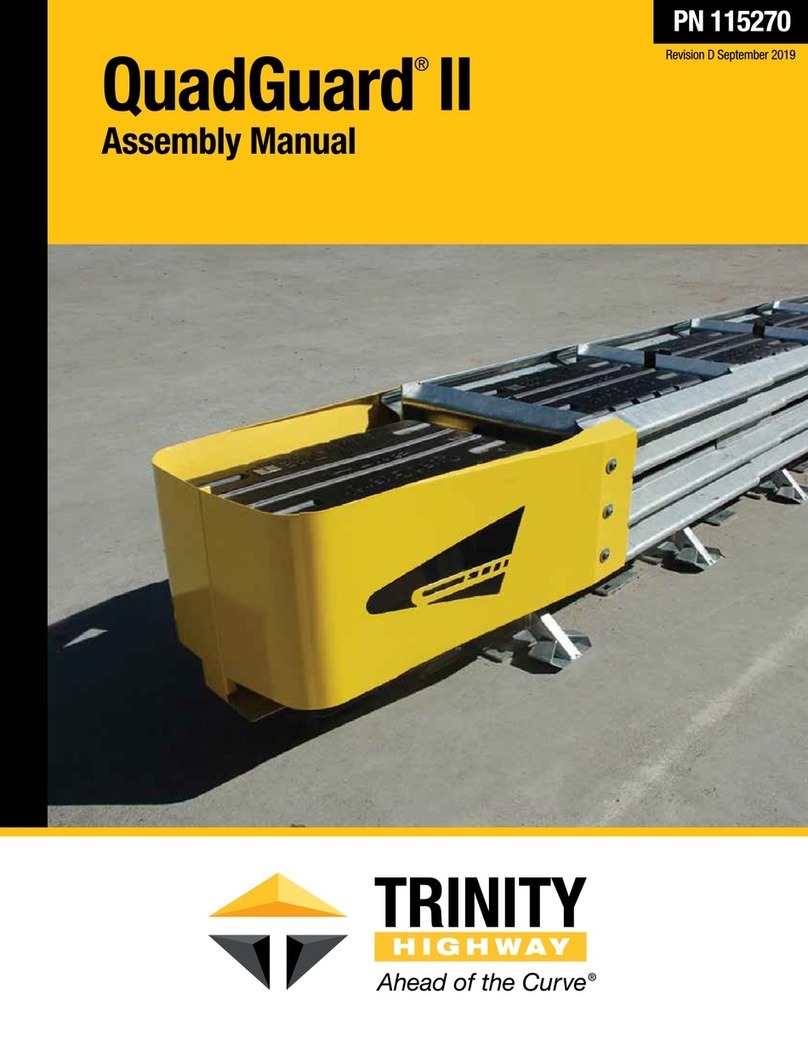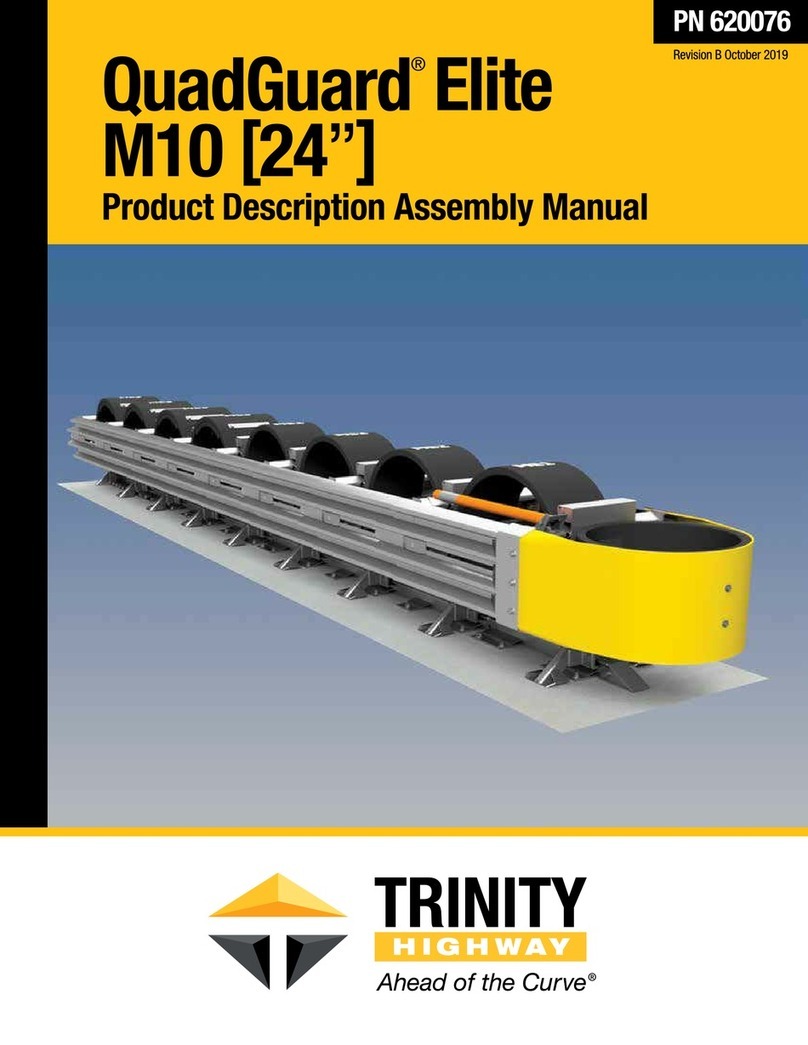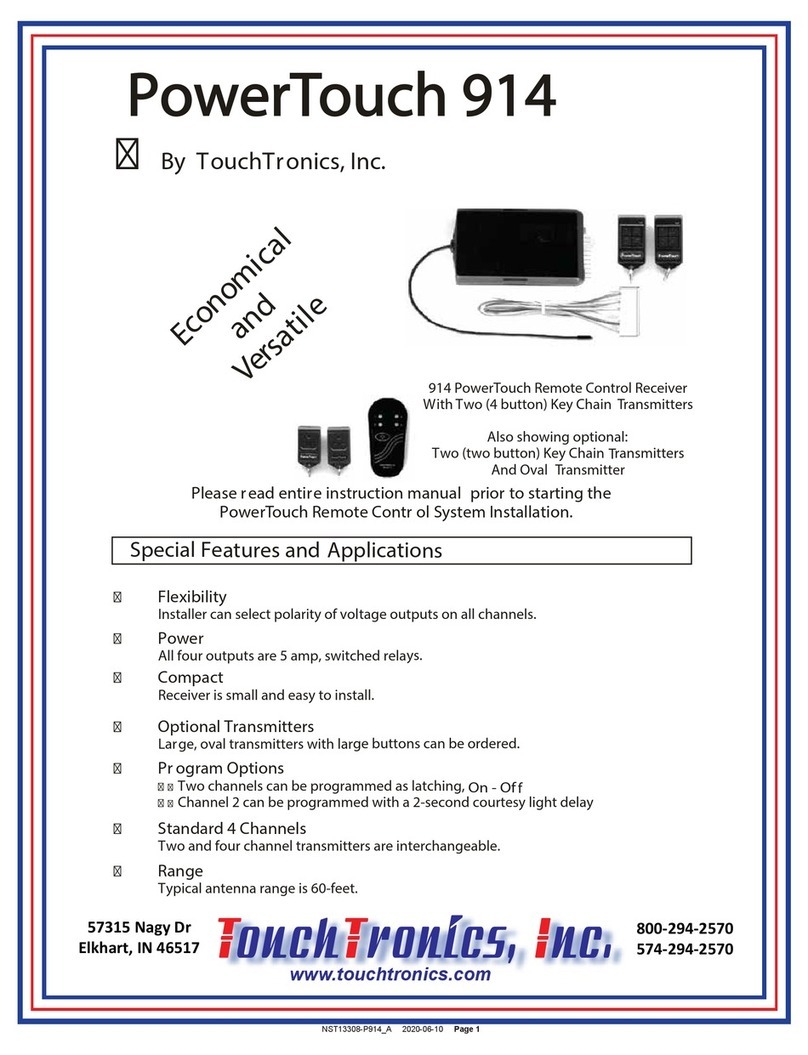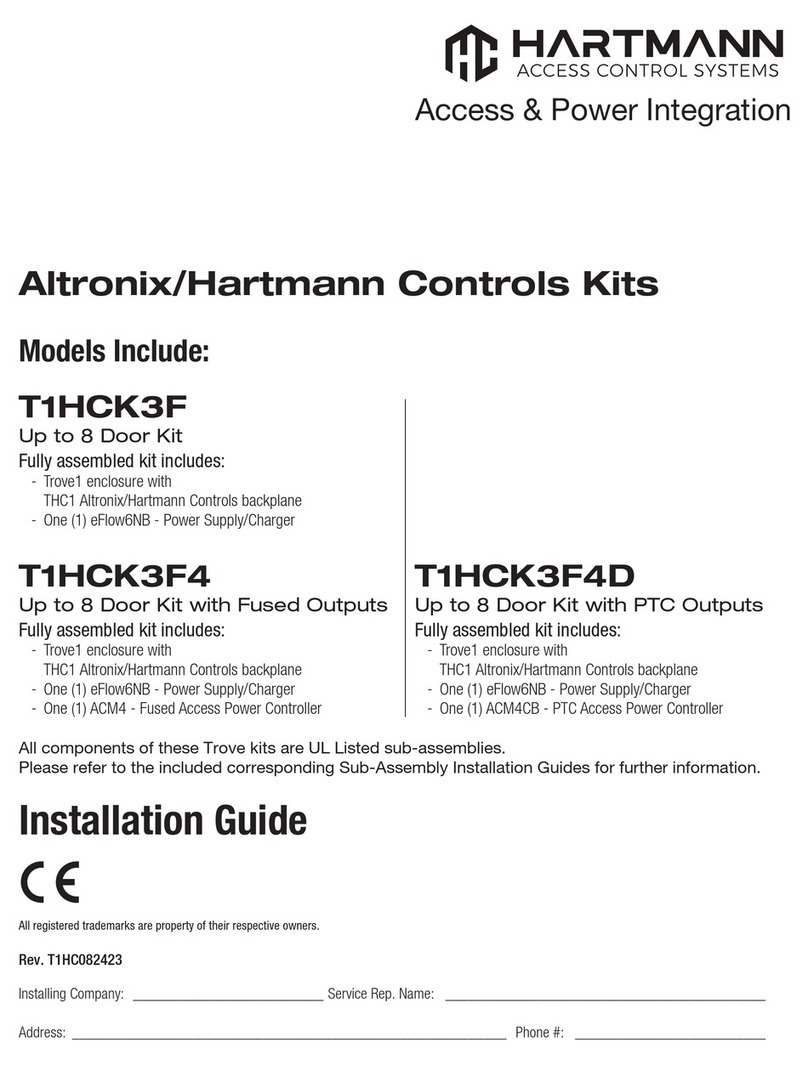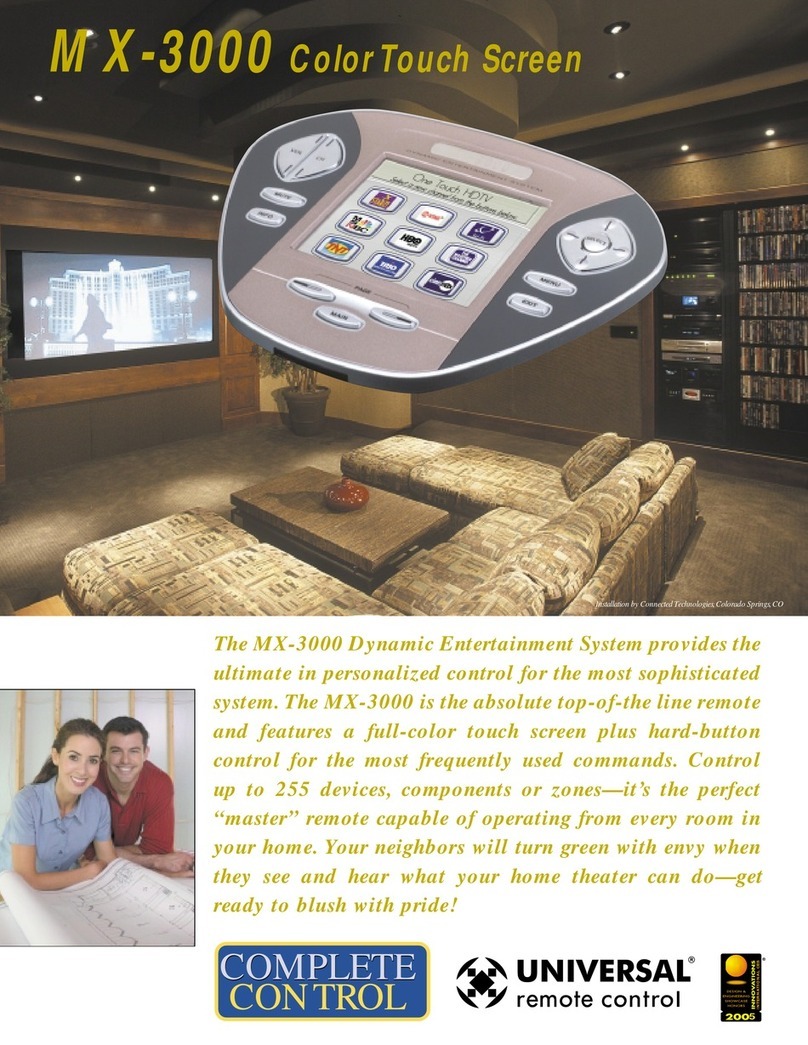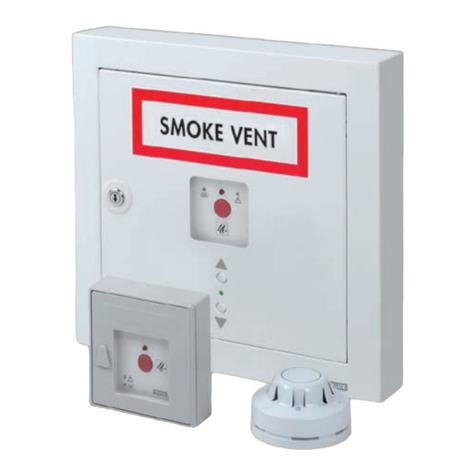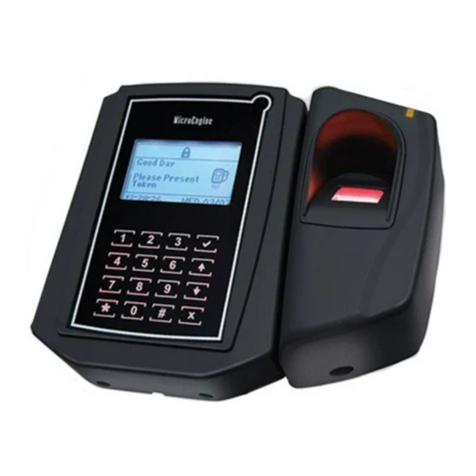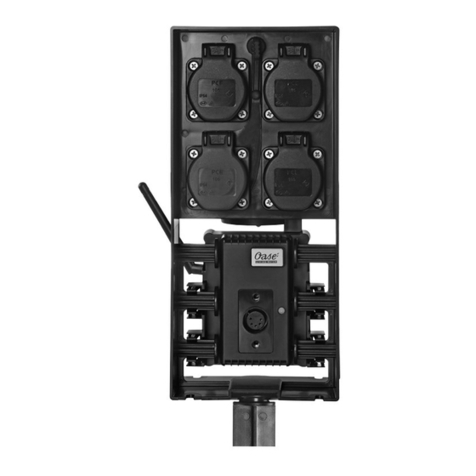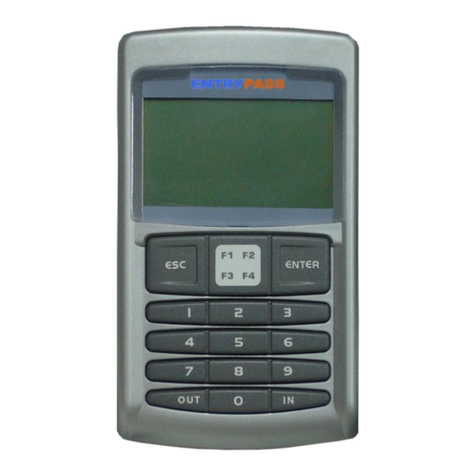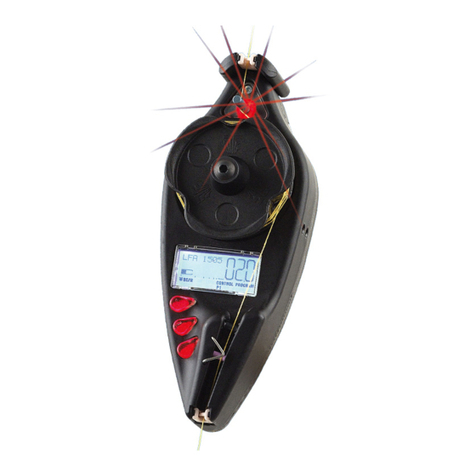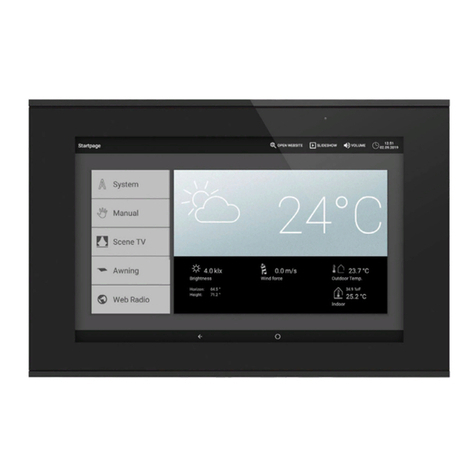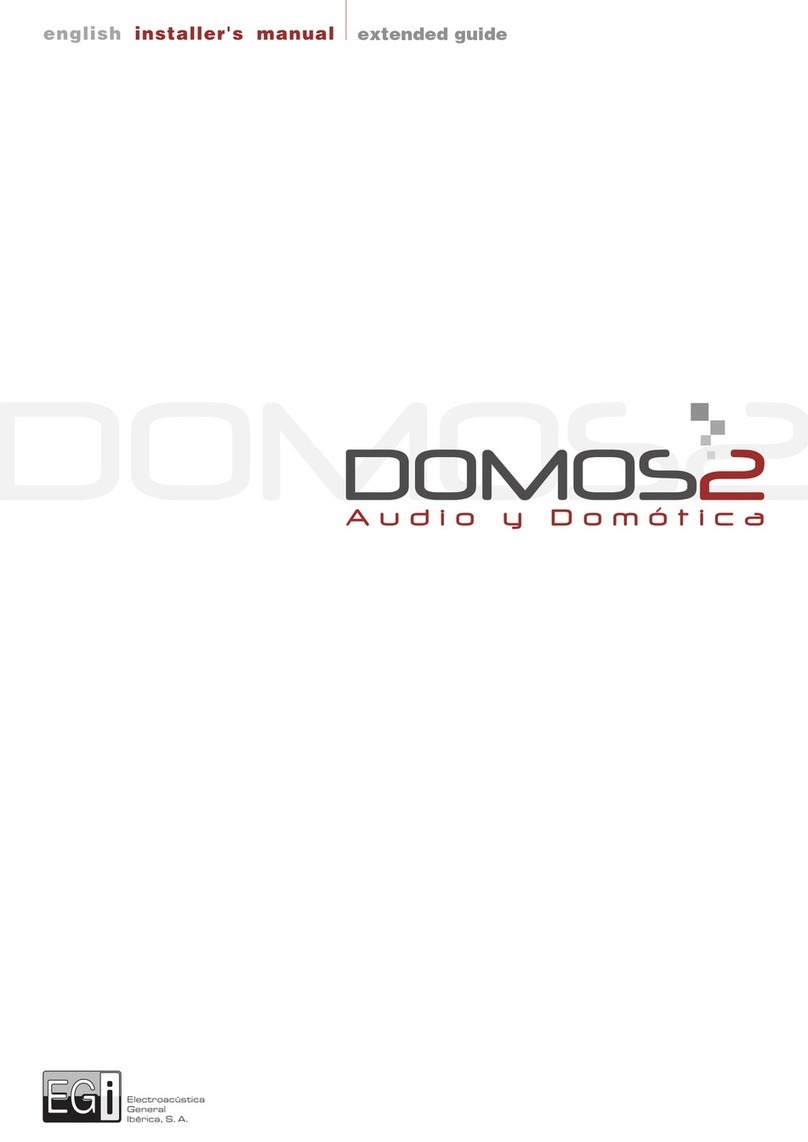Trinity Highway QuadGuard CEN QI2405 User manual


Part No. 115309
Revision C August 2014
www.trinityhighway.com 1 All rights in copyright reserved
QuadGuard
®
CEN
Assembly Manual
Trinity Highway Products, LLC d.b.a.
2525 Stemmons Freeway
Dallas, Texas 75207
Important:
These instructions are to be used only in conjunction with the
assembly, maintenance, and repair of the QuadGuard
®
CEN system. These
instructions are for standard assemblies specified by the appropriate highway
authority only. In the event the specified system assembly, maintenance, or
repair would require a deviation from standard assembly parameters, contact the
appropriate highway authority engineer. This system has been accepted for use
by the European Standard EN 1317-3 for use on the highway system under strict
criteria utilized by that agency. Trinity Highway International representatives are
available for consultation if required.
This Manual must be available to the worker overseeing and/or assembling the product
at all times. For additional copies, contact Trinity Highway International at +1 (214) 589-
8140 or download copies from the website below.
The instructions contained in this Manual supersede all previous information and Manuals. All
information, illustrations, and specifications in this Manual are based on the latest QuadGuard
®
CEN system information available to Trinity Highway International at the time of printing. We
reserve the right to make changes at any time. Please contact Trinity Highway International to
confirm that you are referring to the most current instructions.

Revision C August 2014
www.trinityhighway.com 2 All rights in copyright reserved
Table of Contents
Customer Service Contacts .......................................................................................................... 3
Important Introductory Notes ........................................................................................................ 3
Recommended Safety Rules for Assembly .................................................................................. 4
Safety Symbols ............................................................................................................................. 5
Warnings and Cautions................................................................................................................. 5
Limitations and Warnings.............................................................................................................. 6
QuadGuard®CEN .........................................................................................................................7
Assembly .................................................................................................................................... 10
Recommended Tools ............................................................................................................ 10
Connection Panel Types ....................................................................................................... 13
Maintenance and Repair............................................................................................................. 33
Visual Drive-By Inspection ....................................................................................................33
Walk-Up Inspection............................................................................................................... 33
Post-Impact Instructions ............................................................................................................. 34
Parts Ordering Procedure ........................................................................................................... 37

Revision C August 2014
www.trinityhighway.com 3 All rights in copyright reserved
Customer Service Contacts
Trinity Highway International is committed to the highest level of customer service. Feedback
regarding the QuadGuard
®
CEN, its assembly procedures, supporting documentation, and
performance is always welcome. Additional information can be obtained from the contact
information below:
Trinity Highway Products, LLC dba
Trinity Highway International
Telephone: +1 (214) 589-8140
Website: www.trinityhighway.com
Important Introductory Notes
Proper assembly of the QuadGuard
®
CEN is critical to achieve tested performance that has
been evaluated and accepted per EN 1317-3. These instructions should be read in their entirety
and understood before assembling the QuadGuard
®
CEN. These instructions are to be used
only in conjunction with the assembly of the QuadGuard
®
CEN and are for standard assemblies
only as specified by the appropriate highway authority. If you need additional information, or
have questions about the QuadGuard
®
CEN, please contact the highway authority that has
planned and specified this assembly and, if needed, contact the Trinity Highway International
Customer Service Department. This product must be assembled in the location specified by the
appropriate highway authority. If there are deviations, alterations, or departures from the
assembly protocol specified in this Manual, the device may not perform as it was tested and
accepted.
This system, like other Trinity Highway International systems, has been crash tested pursuant to
EN 1317-3 mandated criteria.
Important:
DO NOT use any component part that has not been specifically
crash tested and/or approved for this system during the assembly or repair of this
system.

Revision C August 2014
www.trinityhighway.com 4 All rights in copyright reserved
This product has been specified for use by the appropriate highway authority and has been
provided to that user who has unique knowledge of how this system is to be assembled. No
person should be permitted to assist in the assembly, maintenance, or repair of this system that
does not possess the unique knowledge described above. These instructions are intended for
an individual qualified to both read and accurately interpret them as written. These instructions
are intended only for an individual experienced and skilled in the assembly of highway products
that are specified and selected by the highway authority.
A set of product drawings are available from Trinity Highway International upon request. Such
drawings should be reviewed and studied thoroughly by a qualified individual who is skilled in
interpreting them before the start of any product assembly.
Important:
Read safety instructions thoroughly and follow the suggested safe
practices before assembling, maintaining, or repairing the QuadGuard
®
CEN.
Failure to follow this warning can result in serious injury or death to the worker
and/or bystanders. Please keep up-to-date instructions available for later use and
reference by anyone involved in the assembly of this product.
Warning:
Ensure that all of the QuadGuard
®
CEN system Danger, Warning,
Caution, and Important statements within the QuadGuard
®
CEN Manual are
followed completely.
Recommended Safety Rules for Assembly
* Important Safety Instructions *
This Manual must be kept in a location where it is readily available to persons who assemble,
maintain, or repair the QuadGuard
®
CEN. Additional copies of this Manual and the Product
Description Manual are immediately available from Trinity Highway International by calling +1
International if you have any questions concerning the information in this Manual or about the
QuadGuard
®
CEN. This Manual may also be downloaded directly from the website listed in the
Customer Service Contact section (see p. 3).
Always use appropriate safety precautions when operating power equipment, mixing chemicals,
and when moving heavy equipment or the QuadGuard
®
CEN components. Work gloves, apron,
safety goggles, safety-toe shoes, and back protection shall be used.
Safety measures incorporating traffic control devices specified by the highway authority must be
used to provide safety for personnel while at the assembly, maintenance, or repair site.

Revision C August 2014
www.trinityhighway.com 5 All rights in copyright reserved
Safety Symbols
This section describes the safety symbols that appear in this QuadGuard
®
CEN Assembly
Manual. Read the Manual for complete safety, assembly, operating, maintenance, repair, and
service information.
Symbol Meaning
Safety Alert Symbol:
Indicates Danger, Warning, Caution, or Important.
Failure to read and follow the Danger, Warning, Caution, or Important indicators
could result in serious injury or death to workers and/or bystanders.
Warnings and Cautions
Read all instructions before assembling, maintaining, or repairing the QuadGuard
®
CEN
system.
Danger:
Failure to comply with these warnings could result in increased risk of
serious injury or death in the event of a vehicle impact with a system that has not
been accepted by the European Standard EN 1317-3 (Crash Cushions).
Warning:
Do not assemble, maintain, or repair the QuadGuard
®
CEN system
until you have read this Manual thoroughly and completely understand it. Ensure
that all Danger, Warning, Caution, and Important statements within the Manual
are completely followed. Please call Trinity Highway International at +1 (214)
589-8140 if you do not understand these instructions. UNDER NO
CIRCUMSTANCES SHOULD ASSEMBLY, MAINTENANCE, OR REPAIR BE
ATTEMPTED BY SOMEONE WHO DOES NOT HAVE THE EXPERIENCE,
SKILL, OR ABILITY TO READ, COMPREHEND, AND PRECICELY FOLLOW
THESE INSTRUCTIONS. Failure to follow this warning could result in serious
injury or death in the event of a collision.
Warning:
Safety measures incorporating appropriate traffic control devices
specified by the highway authority must be used to protect all personnel while at
the assembly, maintenance, or repair site.
Warning:
Use only Trinity Highway International parts that are specified herein
for the QuadGuard
®
CEN for assembling, maintaining, or repairing the
QuadGuard
®
CEN system. Do not utilize or otherwise comingle parts from
other systems even if the systems are other Trinity Highway International
systems. Such configurations have not been tested, nor have they been
accepted for use. Assembly, maintenance, or repairs using unspecified parts or
accessories is strictly prohibited. Failure to follow this warning could result in
serious injury or death in the event of a vehicle impact with an UNACCEPTED
system.
Warning:
Do NOT modify the QuadGuard
®
CEN system in any way.
Warning:
Ensure that the QuadGuard
®
CEN system and delineation used meet
all federal, state, specifying agency, and local specifications.

Revision C August 2014
www.trinityhighway.com 6 All rights in copyright reserved
Warning:
Use only Trinity Highway International parts on the QuadGuard
®
CEN system for assembly, maintenance, or repair. The assembly or
comingling of unauthorized parts is strictly PROHIBITED. The QuadGuard
®
CEN and its component parts have been accepted for state use by the Highway
Authority. However, a comingled system has not been accepted within the
applicable criteria.
Important:
Trinity Highway International makes no recommendation whether
use or reuse of any part of the system is appropriate or acceptable following an
impact. It is the sole responsibility of the local highway authority and its engineers
to make that determination. It is critical that you inspect this product after
assembly is complete to make certain that the instructions provided in this
Manual have been strictly followed.
Warning:
Ensure that your assembly meets all appropriate local specifications
and standards. If you have any questions during the assembly of a QuadGuard
®
CEN at a particular assembly site, contact the specifying highway authority
immediately.
Warning:
Ensure that there is proper site grading for QuadGuard
®
CEN
placement as dictated by the specifying agency.
Limitations and Warnings
The QuadGuard
®
CEN was tested to meet the requirements and guidelines of the 110km/h,
100km/h, 80km/h and 50km/h performance classes using the CEN criteria described in
European Standard EN 1317-3 (Crash Cushions).
The required tests are not intended to represent the performance of products when impacted by
every vehicle type or every impact condition existing on the roadway. The tests are performed to
measure impacts involving vehicles specified by EN 1317-3, under those specific impact
conditions.
Trinity Highway International neither represents nor warrants that the impact results of these
EN 1317-3 established test criteria prevent or reduce the severity of any injury to person(s) or
damage to property. These tests only demonstrate the occurrence of certain results following an
impact within EN 1317-3 criteria. Every departure from the roadway is a unique event.
The QuadGuard
®
CEN was designed to be assembled at a specific deployment site, delineated,
and maintained in accordance with local guidelines. Trinity Highway International offers a
reflective delineator panel for its QuadGuard
®
CEN line of products.
The QuadGuard
®
CEN is intended to be assembled, delineated, and maintained within specific
local guidelines. It is important for the highway authority specifying the use of a highway product
to select the most appropriate product configuration for its site specifications. Careful evaluation
of the site lay out, vehicle population type; speed, traffic direction, and visibility are some of the
elements that require evaluation in the selection of a highway product. For example, curbs could
cause an untested effect on an impacting vehicle.
After an impact occurs, the debris from the impact should be removed from the area
immediately and the QuadGuard
®
CEN should be evaluated and either restored to its original
specified condition or replaced as the highway authority determines as soon as possible.

Revision C August 2014
www.trinityhighway.com 7 All rights in copyright reserved
QuadGuard
®
CEN
KEY
1) CARTRIDGE
2) DIAPHRAGM
3) QUAD-BEAM FENDER PANEL
4) NOSE COVER
5) MONORAIL
6) BACKUP
Figure 1
Plan & Elevation

Revision C August 2014
www.trinityhighway.com 8 All rights in copyright reserved
How to Determine Left/Right
To determine left from right when ordering parts, stand in front of the system facing the roadside
obstacle. Your left is the system’s left and your right is the system’s right (see Figure 2).
Counting the Number of Bays
One bay consists of one Diaphragm, two Fender Panels, etc. The Nose Assembly is not
considered a Bay. There are no Cartridges in the front two (2) bays of the system; therefore,
there will be two (2) more bays than the number of Cartridges for the system. To determine
number of Bays, count Fender Panels on one side (see Figure 3).
Figure 2
Left/Right
Figure 3
Number of Bays

Revision C August 2014
www.trinityhighway.com 9 All rights in copyright reserved
Measuring the Width
The QuadGuard
®
CEN is available in five (5) nominal widths:
1. 610 mm [24”]
2. 760 mm [30”]
3. 915 mm [36”]
4. 1753 mm [69”]
5. 2286 mm [90”]
The nominal width of the system is the width between Side Panels behind the Backup (see
Figure 4).
The outside width of the system is approximately 150 mm to 230 mm [6” to 9”] wider than this
measurement.
Figure 4
System Width

Revision C August 2014
www.trinityhighway.com 10 All rights in copyright reserved
Assembly
Warning:
Location of the Backup in relation to nearby objects will affect the
operation of the attenuator. Upon impact, the Fender Panels telescope rearward
and extend beyond the rigid Backup as much as 760 mm [30”] from their pre-
impact location. Position the Backup so that the rear ends of the last Fender
Panels are a minimum of 760 mm [30”] forward of objects that would otherwise
interfere with movement of the panels. Failure to comply with this requirement
may result in impaired system performance offering motorists less protection and
causing component damage.
Inspect Shipment
Before deploying the QuadGuard
®
CEN, check the received parts against the shipping list
supplied with the system. Make sure all parts have been received.
Recommended Tools
Documentation
Manufacturer’s Assembly Manual
Manufacturer’s Drawing Package
Personal Protective equipment
Safety Glasses
Gloves
Safety-Toe Shoes
Apron for epoxy anchors (if applicable)
Cutting equipment
Rebar Cutting Bit
Rotary Hammer Drill
22 mm (7/8”) Concrete Drill Bits (Double-Fluted)
Grinder, Hacksaw or Torch (optional)
Drill Motor
Drill Bits 1/16” - 7/8”
Note:
Trinity Highway International recommends using double-fluted drill bits to achieve
required tensile strength if assembling with an epoxy anchoring system.
Wrenches
Heavy duty impact wrench
Standard adjustable wrench
1/2" drive sockets: 9/16", 11/16", 3/4", 15/16", 1 1/8", 1 1/4"
Deep Sockets: 15/16", 1 1/4"
Ratchet and attachments for the above sockets
Breaker Bar: 1/2" x 24"
Torque Wrench: 200 ft-lb
Crescent Wrench: 300 mm [12"]
Allen Wrench: 3/8
Impact Wrench: 1/2"

Revision C August 2014
www.trinityhighway.com 11 All rights in copyright reserved
Hammers
Sledgehammer
Standard hammer
Miscellaneous
Traffic control equipment
Lifting and moving equipment (A lifting device is preferred although a forklift can be
used.) Minimum 5,000 lb. capacity required.
Air Compressor (100 psi) and Generator (5 kW)
Long pry bar
Drift pin 300 mm [12”]
Center punch
Tape measure 7.5 m [25’]
Chalk line
Concrete marking pencil
Nylon bottle brush for cleaning drilled holes
Rags, water, and solvent for touch-up
Chain, 3/8” grade 40, 6 m [20’] with 13 mm [1/2”] hooks.
Acetylene torch
Note: The above list of tools is a general recommendation. Depending on specific site
conditions and the complexity of the assembly specified by the appropriate highway
authority, additional or fewer tools may be required. Decisions as to what tools are
needed to perform the job are entirely within the discretion of the specifying highway
authority and the authority’s selected contractor performing the assembly of the system
at the authority’s specified assembly site.

Revision C August 2014
www.trinityhighway.com 12 All rights in copyright reserved
Assembly Procedures
Note:
The Drawing Package supplied with the QuadGuard
®
CEN must be used with these
instructions for proper assembly and should take precedence over these general instructions.
1) Determine Connection Panel Type
A Connection Panel or Side Panel will be used on each side of the Backup. A Side Panel is
not needed when a Connection Panel is used. Several types of Connection Panels are
available for use with the QuadGuard
®
CEN. Refer to Figures 6 through 9 and the drawing
package to determine which type of panels are being attached.
Note:
The proper Connection or Side Panel must be used for optimum impact performance of
the system. The correct panel to use will depend on the direction of traffic and what type of
barrier or fixed object the QuadGuard
®
CEN is shielding. Contact the Customer Service
Department prior to assembly if you have any questions (see p. 3).
Figure 5
QuadGuard
®
CEN with Connection Panel

Revision C August 2014
www.trinityhighway.com 13 All rights in copyright reserved
Connection Panel Types
If a system is placed in a location where traffic will be approaching from the rear of the system,
a Connection Panel is necessary. Figures 6, 7, 8, and 9 show the standard panel types. There
are variations for each panel type. The specific panel needed will depend on system and site
conditions. Therefore, it is important to send site specific data to the Customer Service
Department for a recommendation for exact panel needed for your application.
Figure 8
Quad-Beam to W-Beam Connection Panel
Figure 9
Quad-Beam End Shoe
Connection Panel*
Figure 6
Quad-Beam in Safety Shape Barrier
Connection Panel
Figure 7
Quad-Beam to Thrie-Beam
Connection Panel
*
Note:
Wheel Deflectors may
be required for this application.

Revision C August 2014
www.trinityhighway.com 14 All rights in copyright reserved
Anchor the System
Cross-slope of assembled location shall not exceed 8% and not vary (twist more than 2%
from front to back). For these conditions, a leveling pad is required. The anchors must have
a pull out strength of 82.3 kN (18,500 lbs) and a shear strength of 109 kN (24,500 lbs).
Test Parameters
The best overall measure of anchor performance is load capacity. Anchor load capacity can
be defined by testing static tensile and static shear strengths. Static tensile strength is the
maximum force sustained by an anchor when subjected to gradual increases in loading at
the exposed end of the anchor and applied in line along its axis. Static shear strength is the
maximum force sustained by an anchor when subjected to gradual increases in loading
applied at the base of the exposed end of the anchor and applied perpendicular to its axis.
The tensile strength developed will be a function of the strength of the concrete or asphalt
surface the anchor is placed in. Embedment depth can also affect anchor tensile strength.
Tensile test of anchors chosen should be tested in compliance with ASTM E488 – Standard
Test Methods for Strength of Anchors in Concrete and Masonry Elements (see Figure 10).
Recording Test Results
Three pull tests should be conducted on site when the anchoring conditions are different
from those described in the reference section of this document with the results recorded.
Pictures of the testing should also be taken and stored with the recorded data.
The anchor surface is acceptable if the average of the three pulls is equal or greater than
82.3 kN (18,500 lbs).
Figure 10

Revision C August 2014
www.trinityhighway.com 15 All rights in copyright reserved
1) Mark System Location
Locate the centerline of the system by measuring the proper offset from the roadside
obstacle. See the drawing package supplied with the system. Place chalk line to mark the
centerline of the system. Mark a construction line parallel to the center line and offset 165
mm [6.5”] to one side as shown in Figure 11. The edge of the Monorail will be placed on this
line.
Note:
The concrete pad shall comply with the project plans supplied with the system.
Warning:
Location of system with respect to the roadside obstacle is critical
and dependent on the type of Transition Panel used. See the project plans
supplied with the system for details.
2) Anchor the Backup and Monorail
See Figures 12 through 14 (showing Backup and Monorail deployment). For minimum
foundation requirements, Consult the Trinity Highway International Customer Service
Department (see p. 3).
Locate Tension Strut Backup and Monorail on foundation with side of Monorail on the
construction line (see Figure 13). Verify that any Connection Panels fit properly before
anchoring Backup. Drill anchor holes in foundation using the Backup as template. Anchor
the Backup to the foundation per the anchor manufacturer’s instructions.
Figure 11
(Top view of concrete pad)
Locating Construction Line
Figure 12
Anchoring Tension Strut Backup to Foundation

Revision C August 2014
www.trinityhighway.com 16 All rights in copyright reserved
A) Tension Strut Backup Assembly (Figure 13)
Locate the Backup and Monorail on the pad with the side of the Monorail on the
construction line (see Figure 13). Verify that applicable Connection Panels fit properly
before anchoring Backup. Drill anchor holes to appropriate depth in the pad using the
Backup as a template. Do not drill through foundation. Anchor the Backup to the
foundation per the anchor manufacturer’s instructions.
B) Monorail Assembly
Locate the Monorail using the Monorail Assembly drawings. Drill anchor holes to
appropriate depth using the Monorail as a template (see Figure 13). Do not drill through
foundation. Anchor each Monorail section per the anchor manufacturer’s instructions
(see Figure 15). It is important to attach each segment of Monorail in alignment from the
back to the front of the system (± 6 mm [1/4”]).
Warning:
Improper alignment at the Monorail Splice Joints will prevent proper
system collapse during an impact.
Warning:
Every hole and slot in Backup and Monorail must have an
appropriate ground anchor attaching the Backup and Monorail to the foundation.
Figure 14
Proper Stud Height
Figure 13
Anchoring the System
CAUTION:
40 MM [1.50”]
MAXIMUM STUD HEIGHT
ROADWAY
ANCHOR
BACKUP OR MONORAIL
WASHER
NUT

Revision C August 2014
www.trinityhighway.com 17 All rights in copyright reserved
3) Attach Side Panels / Connection Panels to Backup Assembly
Attach the Connection Panel or Side Panel as appropriate to each side of the Backup. See
Figures 15 - 16 and the drawing package for more information.
Note:
A Side Panel is not needed when a Connection Panel is used.
Figure 16
Side Panel/Connection Panel Attachment
for Wide Applications
Figure 15
Side Panel/Connection Panel
Attachment for Narrow Applications
TENSION STRUT BACKUP
SIDE PANELS SHOWN
USE CONNECTION PANELS
AS APPROPRIATE
(SEE FIGURES 6-9)
5/8” X 2” RAIL BOLT
5/8” RAIL NUT

Revision C August 2014
www.trinityhighway.com 18 All rights in copyright reserved
4) Attach Monorail Guides
Attach Monorail Guides to Diaphragms as shown in Figure 17 and the Diaphragm Assembly
drawing.
5) Attach Diaphragms (Narrow Systems)
Orient a Diaphragm so that the front face of the Quad-Beam™ Panel faces toward the nose
of the system (see Figure 18). Slide the Diaphragm onto the Monorail. Slide one Diaphragm
all the way to the Backup to ensure the system is able to collapse properly during impact.
Once this has been verified, slide the Diaphragm forward 915 mm [36”] in front of the
Backup (see Figure 19). Orient and slide all other Diaphragms onto the Monorail and
position each (see Figure 19). The Diaphragm spacing shown in Figure 19 allows the
system to be assembled. Once the system is assembled, the Diaphragms will be moved to
their final locations.
6) Attach Diaphragms (Wide Systems)
Orient Diaphragms so that the front face of the Quad-Beam™ Panel faces toward the nose
of the system (see Figure 18). The widest Diaphragm should be assembled closest to the
Backup with each subsequent Diaphragm being progressively narrower. Slide the widest
Diaphragm onto the Monorail and all the way to the Backup to ensure system is able to
collapse properly during impact. Once this has been verified then slide the Diaphragm
forward to approximately 915 mm [36”] in front of the Backup (see Figure 19). Orient and
slide all other Diaphragms onto the Monorail and position each as shown approximately
915 mm [36”] in front of the previous Diaphragm (see Figure 19).
Figure 17
Monorail Guides

Revision C August 2014
www.trinityhighway.com 19 All rights in copyright reserved
Figure 18
Diaphragm Orientation
Figure 19
Initial Diaphragm Spacing
This manual suits for next models
4
Table of contents
Other Trinity Highway Control System manuals
Popular Control System manuals by other brands
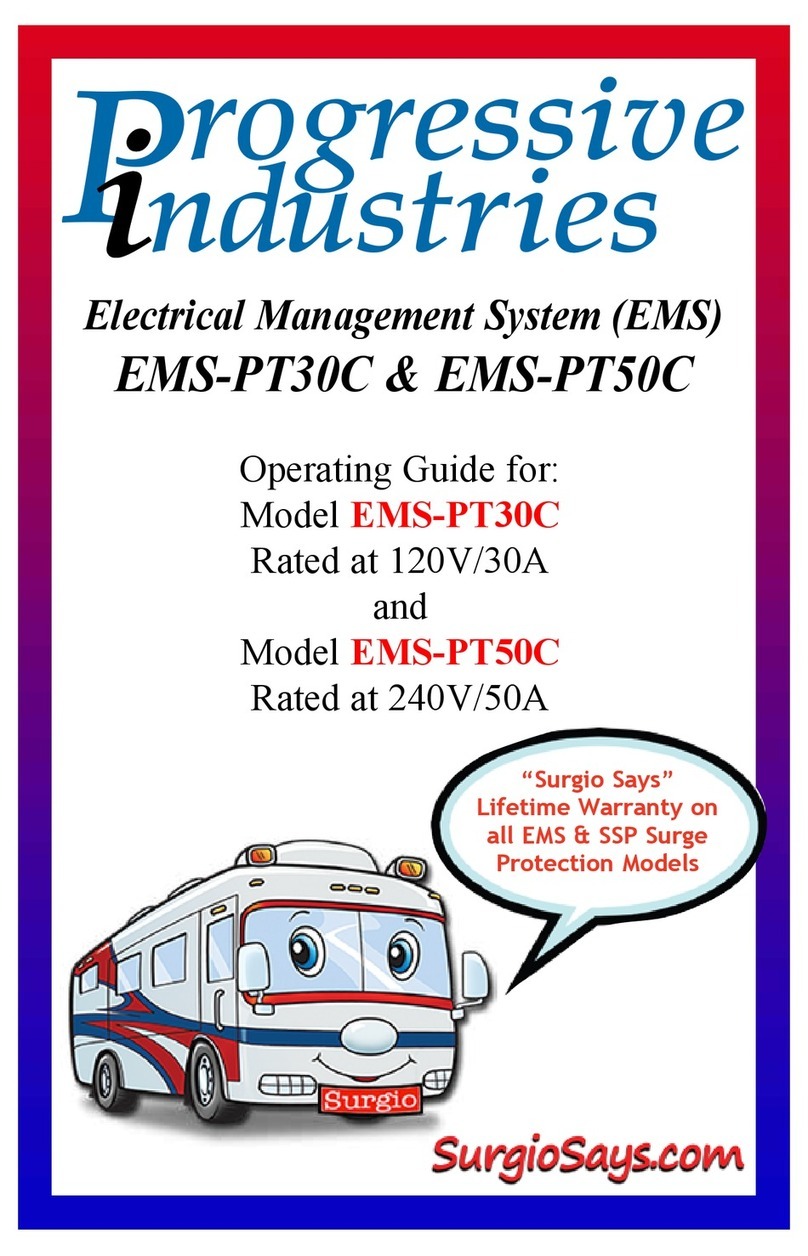
Progressive Industries
Progressive Industries EMS-PT30C operating guide
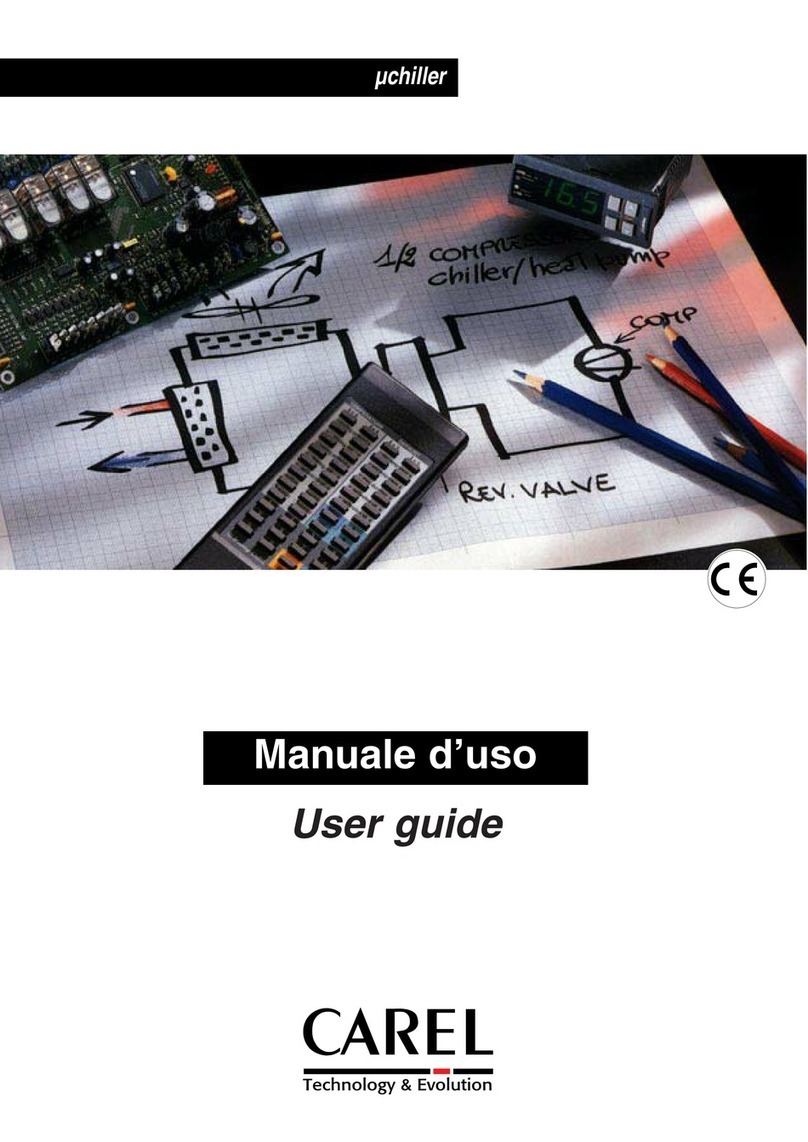
Carel
Carel m chiller user guide

Kongsberg
Kongsberg ACS500 instruction manual
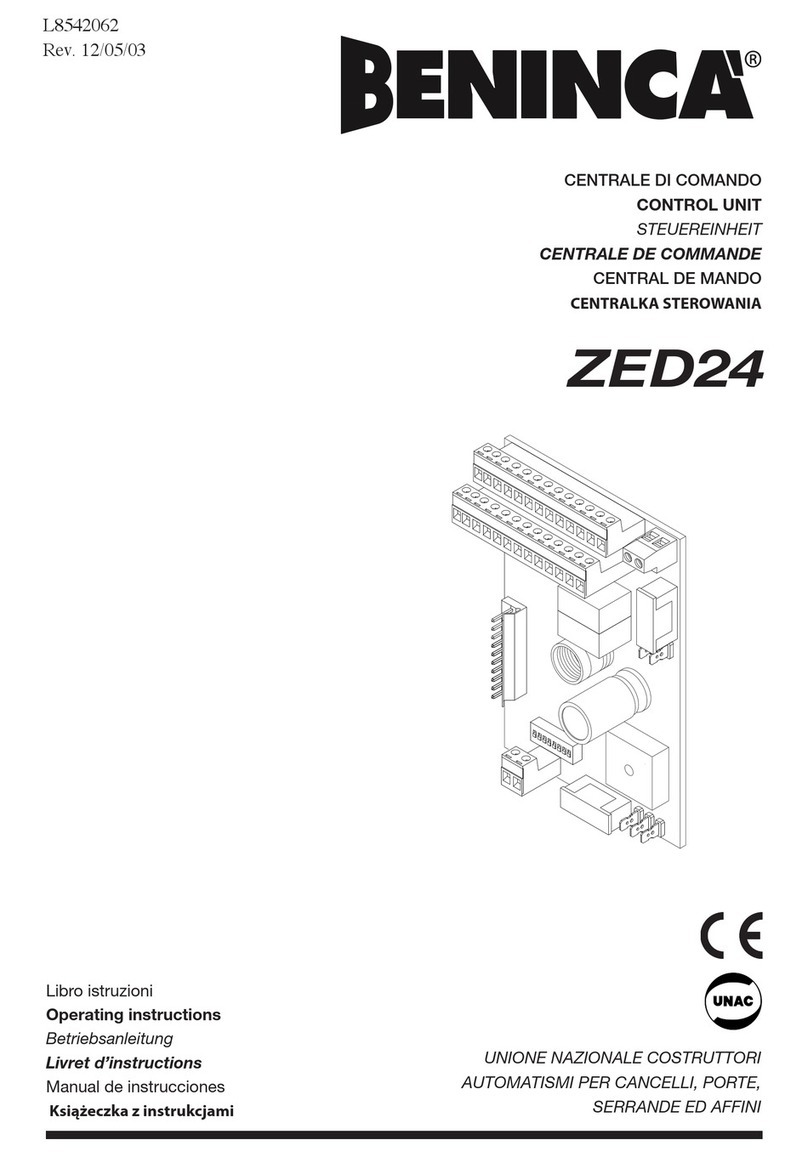
Beninca
Beninca ZED24 operating instructions
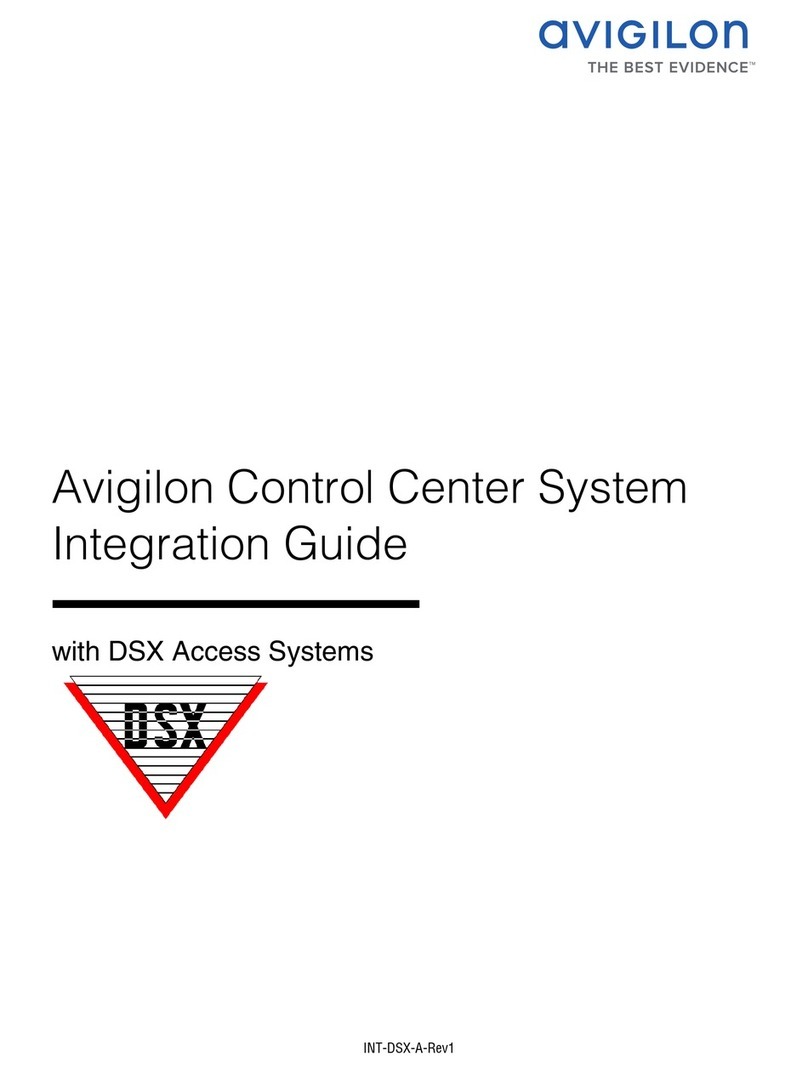
Avigilon
Avigilon INT-DSX-A-Rev1 Integration guide

Grand Canyon Gas Logs
Grand Canyon Gas Logs WBECS OWNER'S OPERATION AND INSTALLATION MANUAL
